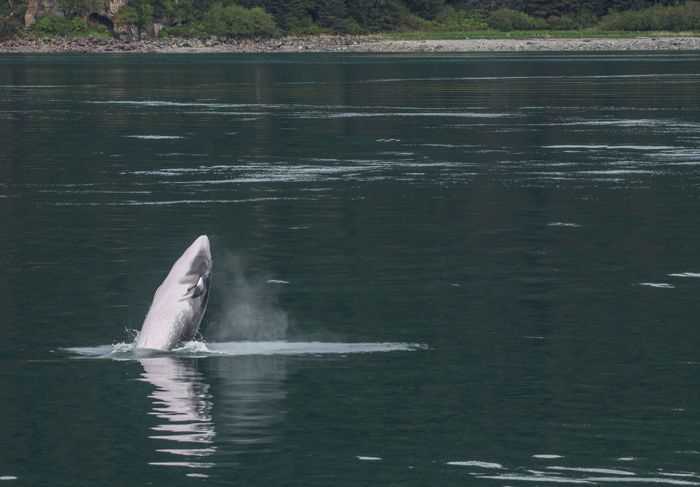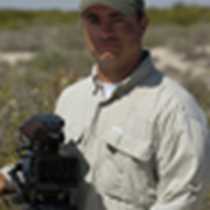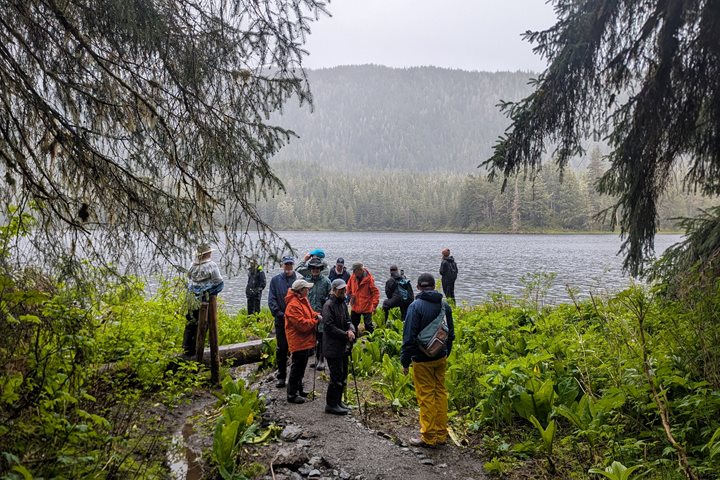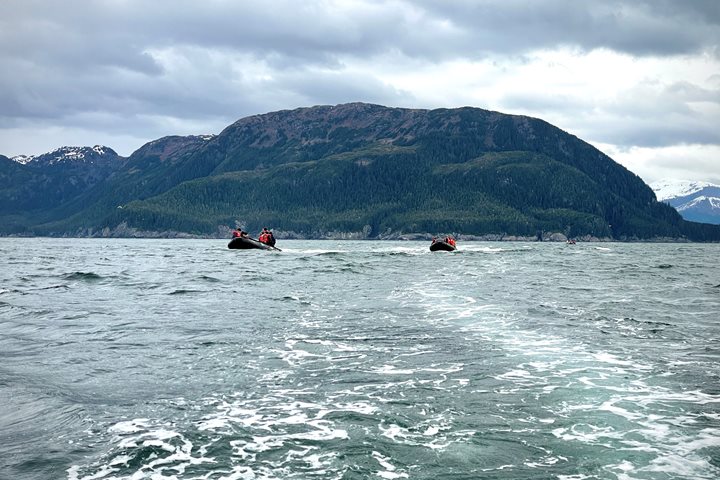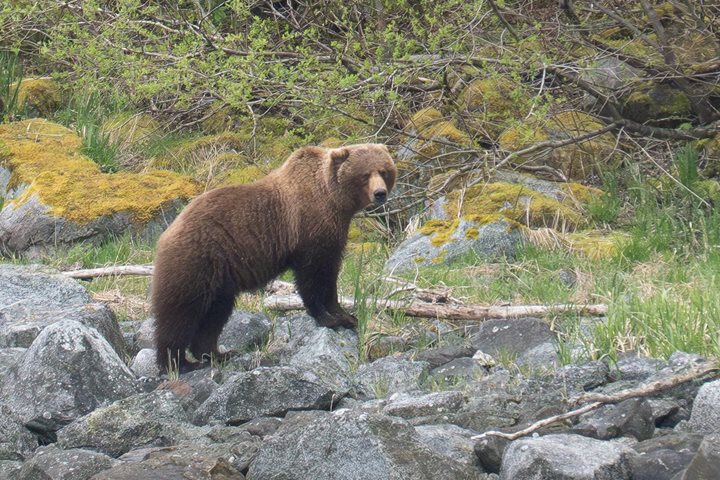We awoke to a grey morning of fog and mist. We had anchored last night not too far from our day’s adventure to visit Inian and George Islands.
These islands are the gatekeepers to the northern entrance of the Inside Passage, lying between Cross Sound and Icy Strait. Exposed to high-energy seas from the Gulf of Alaska, the narrow channels separating the islands are sometimes referred to as “the laundry chute”. The cold upwelling that comes from the gulf brings in nutrients to the waters, which in turn make for great fishing for a large population of Steller sea lions, bald eagles, and baleen whales. For millennia, Tlinget people came here to hunt and fish in the rich bounty that these waters provided. Sitka black-tailed deer, brown bears, and sea otters also frequent these rugged shores.
As the fog lifted, there were some humpbacks in the distance, but a little Minke whale stole the show. Minkes are one of the smallest baleen whales, weighing in at about 20,000 pounds and reaching lengths of up to thirty five feet. The body is black or dark grey above and white underneath. They have a distinctive white band across their pectoral fins. Minke’s are not known to show off their acrobatic skills, so we had quite a surprise when this Minke breached eight times right by the boat.
After the Minke was through with its exuberant performance, we cruised toward our anchorage in the Inian Islands. The islands have a large population of sea lions that are hauled out on the rocks and fishing for salmon and other fish in the churning waters. Steller sea lions are doing well in Southeast Alaska. Sea otters floated around on their backs among the kelp beds. The healthy giant kelp beds are the ideal habitat for sea otters. Sea lions caught fish within yards of our boat and came to the surface to eat. One even caught a king salmon, which it ate in three big bites. There were at least two dozen eagles sitting in the trees above waiting for a fish to come too close to the water surface.
After a nice long exploration of the Inian Islands by Zodiac boats, we pulled anchor and went three miles to George Island. During WWII, it was an army outpost with men stationed here to watch for any invasion that might come from the open ocean. A half-mile walk through beautiful forest brought us to the old barracks house and the large gun that pointed out towards the open waters of the Gulf of Alaska. It was different times indeed back in those days. The island is beautiful, but the lodgings were bleak, and the big gun was ominous.
We explored tidal pools on a sandy beach, visited ponds full of skunk cabbage, and the little bit of rain did not bother anyone. The gentle rainfall just reminded us that we were in a temperate rainforest in beautiful Southeast Alaska.

